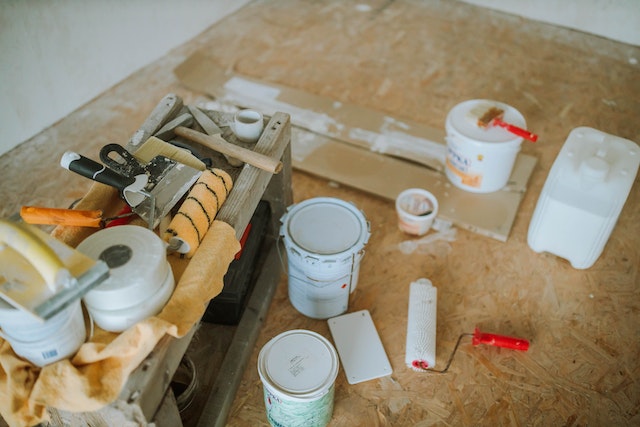 Understanding the Water Damage Repair Process
Understanding the Water Damage Repair Process
Water damage is one of the number one concerns for homeowners across the country. It can strike unexpectedly, fester in hidden areas, and cause significant damage to your property and possessions. While homeowners insurance may cover some of the cost of repairs depending on the type of incident and level of damage, restoration is something that has to happen as soon as possible to prevent further damage and long-term expenses.
For these reasons, it is important to know what the water damage restoration process looks like, and hire a professional restoration company to do the work. First, let’s take a look at a few of the most common causes of water damage that you may experience on your property.
Causes of Water Damage
When moving or standing water is collecting in places where it does not belong, you can experience water damage. With the excess water in the affected areas, you could encounter structural damage to building materials, mold growth, safety hazards from chemicals, ruined possessions, and more. Here are a few of the most common causes of water-related damage.
Burst Pipe
If a pipe burst in your home for whatever reason, the result could be a pool of standing water that harms nearby materials. Leaking pipes are one of the top causes of water damage, especially if your home has older plumbing systems or you live in an area that experiences freezing temperatures. The water in the plumbing can freeze and expand, leading to a leaky pipe.
Natural Disasters
You have no control over nature, and the weather can also cause water damage. Rain water can absorb into the ground and seep in through your foundation or get in through a roof leak. Flood water can put your basement or lower floors underwater. Even an earthquake could cause flood damage in the home if the plumbing is compromised by the movements.
Sewage Backup
Due to either a clog or flood damage, your sewer lines could back up, leaving contaminated water in the building. This type of health hazard is known as black water because of the number of dangerous contaminants. It poses a severe health risk if you do not get rid of it quickly and wear protective gear while doing so.
Leaking Appliances
Any appliance that uses water has the potential to leak and cause water damage. This includes dishwashers, washing machines, toilet tanks, sinks, showers, water heaters, refrigerators, and more. If they malfunction or get broken in some way, water can collect in your home.
Water Damage Restoration Process
The restoration process is incredibly important to ensure that all water is extracted, materials are dried, and the affected area is cleaned. A thorough repair job will include all of the following steps.
Inspection
A thorough inspection to locate the extent of the damage is the crucial first step in the water removal process. To return the property to its pre-loss condition, every drop of moisture must be extracted. You can attempt this step on your own, but a Portland water damage restoration company has the equipment needed to make sure that every space that may have collected water is discovered.
Extraction
Using either pumps, vacuums, or other equipment, it is time to start extracting the water that has collected on the property. This is a complex process for any home or business and you may need to invest in high-quality equipment or a professional restoration company to do the job correctly.
Thorough Drying Process
The drying process is crucial once all of the water that can be removed by other equipment is gone. There will still be plenty of building materials and personal possessions that are wet. Removing as many of these items from the affected area to air-dry will help speed up the process. Then, you will need to use air movers, large fans, and a dehumidifier to evaporate the remaining moisture out of these materials and then remove it from the air. If possible, open windows and doors throughout the home to keep the air moving if weather allows.
Cleaning
Depending on what caused the water damage, there could be a lot of leftover debris and harmful contaminants that pose health hazards for those in your home. For this reason, cleaning and disinfecting surfaces in the damaged area will be an important part of the restoration process. There could also be a mold infestation after water damage occurs and goes unaddressed, so make sure you invest in mold removal to protect the air quality indoors.
Remodeling
The final step that may be necessary for the water damage removal process could be replacing or restoring damaged materials in the structure of the building. Water damage can ruin floorboards, drywall, ceilings, carpet, and other materials in your home, and part of your insurance claim should include restoring these items back to pre-loss condition.
Signs of Potential Water Damage
The water damage restoration process begins by identifying the problem. If there is not an obvious incident that caused the damage, then you need to be on the lookout for these warning signs of water damage.
Mold Growth
If you find mold anywhere in your home, then there is probably a collection of moisture nearby. Mold spores thrive in dark and damp places, so they can be hard to find. To make sure every remnant is removed, contact a mold professional. You could always take air samples to test for mold spores or asbestos-containing materials in the building structure.
Peeling Paint
If you ever notice peeling paint on your walls or ceiling, this could be a sign that there is water damage nearby. It could be from a broken pipe or damaged water supply lines if it is in an inaccessible space.
Water Stains
Odd discolorations are another sign of potential water damage. They can often occur near bathrooms or other appliances. If you ever notice water stains in your home, take action immediately or call a water damage restoration company.
Never Wait to Respond When Water Damage Occurs
The moment you notice water damage, you need to take steps to enact a water damage restoration effort as soon as possible. Take action yourself or get in touch with disaster recovery services. Restoration companies will work with you throughout the entire process to preserve your property and possessions.
You can also take proactive steps to prevent water damage from happening in the first place. Ensure toilet tanks throughout the home function properly. Check the drain water valve on your water heater every once in a while for a leak. The first step to water mitigation is prevention, so keep your appliances and plumbing systems maintained to protect the building materials and personal items in your home from water damage.


